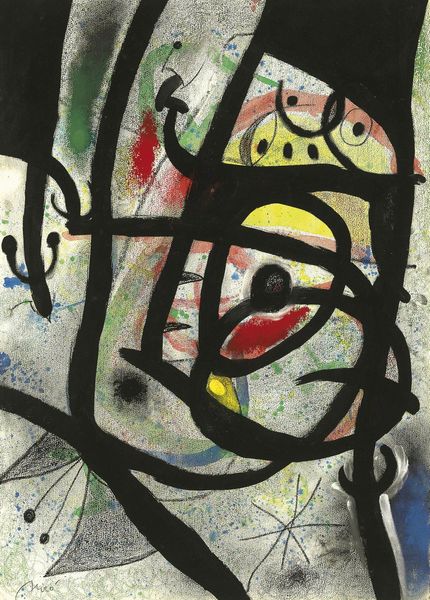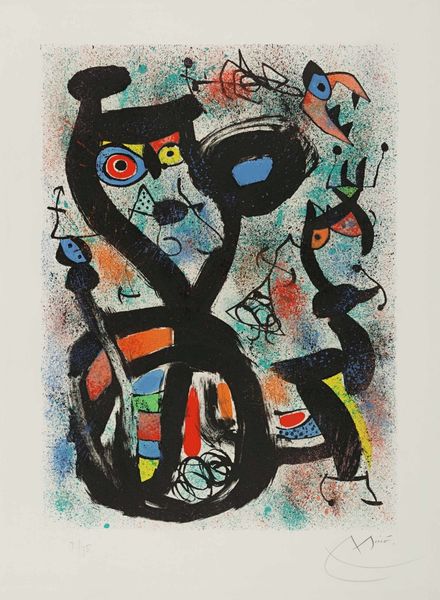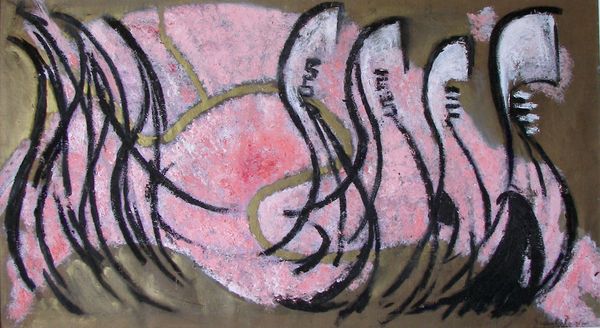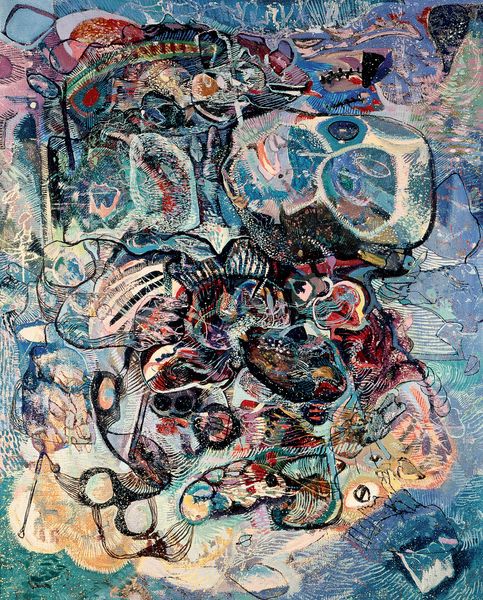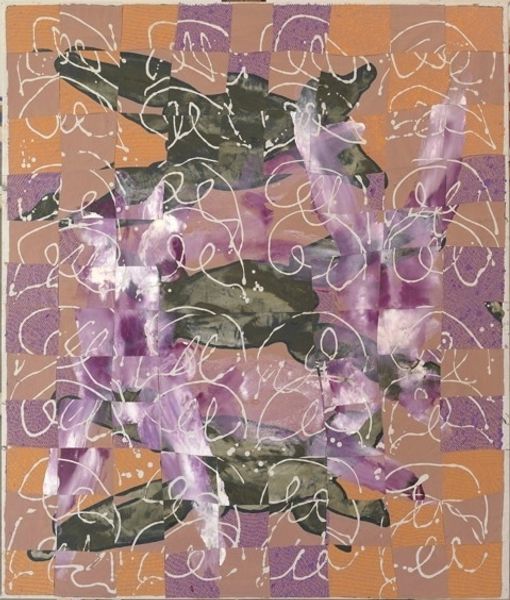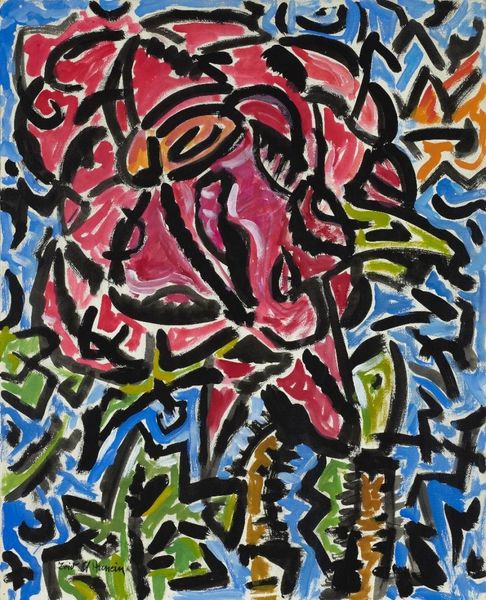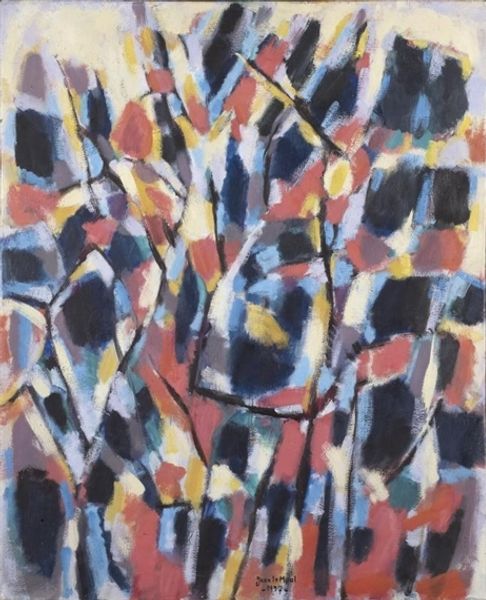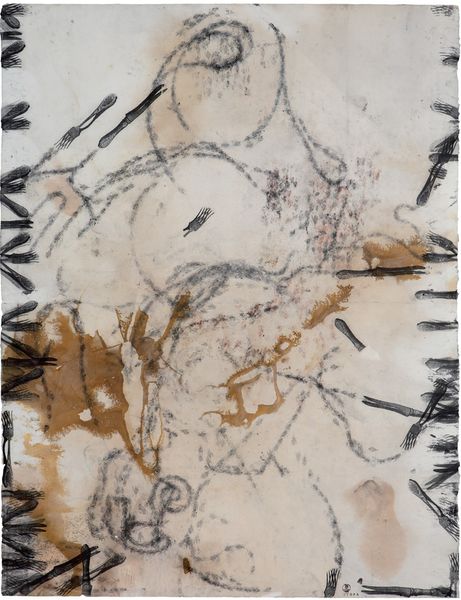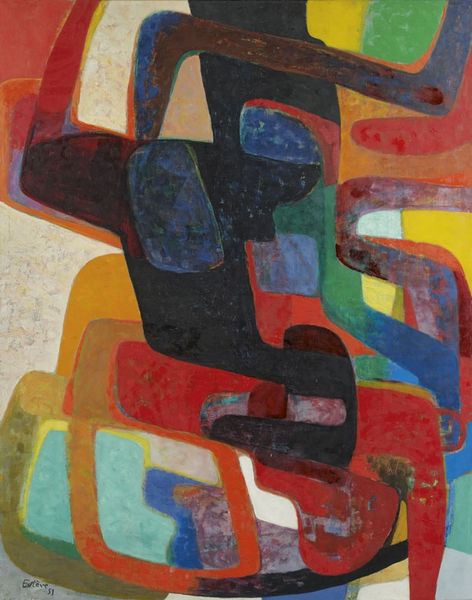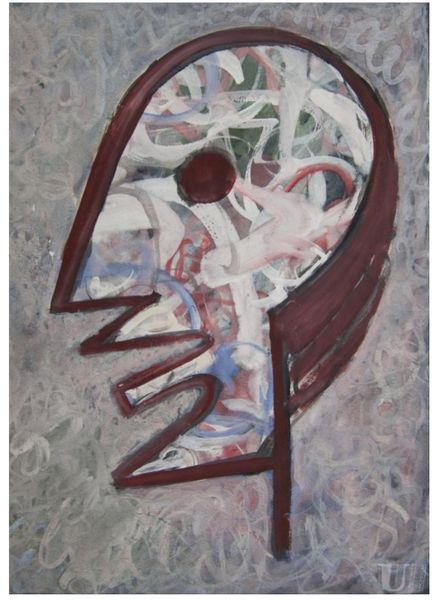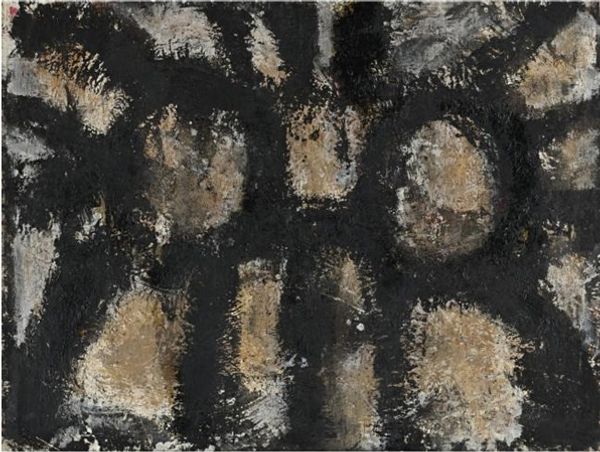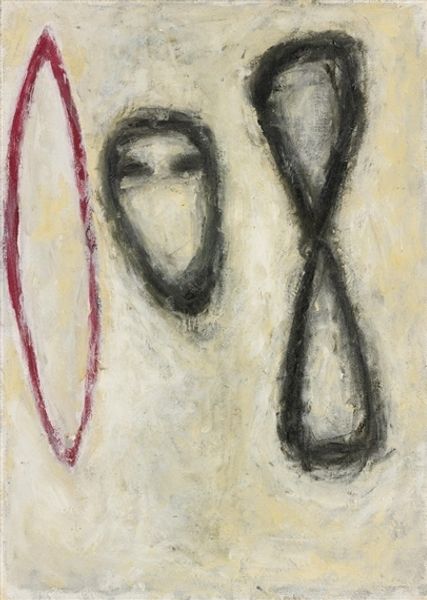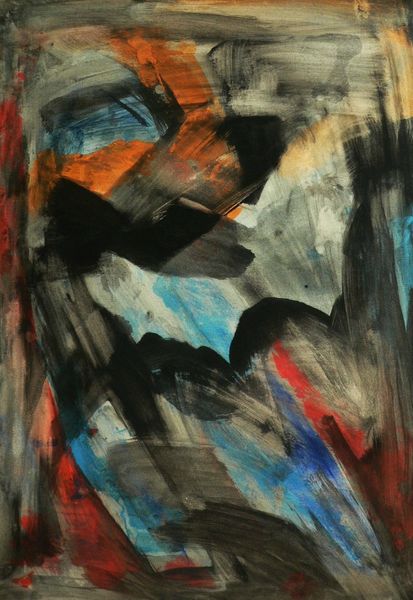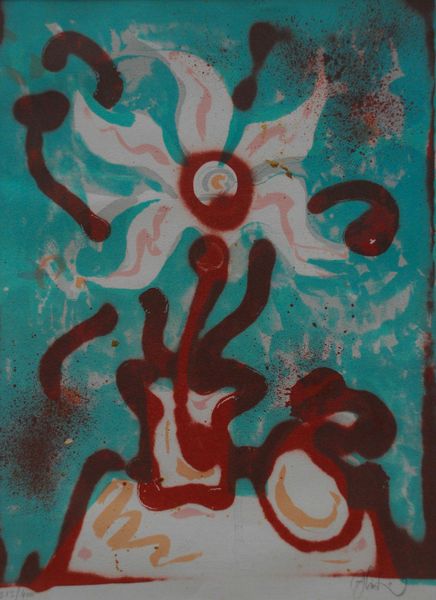
Copyright: Vilen Barsky,Fair Use
Curator: Looking at Vilen Barsky’s “Image,” completed in 1960, a portrait emerges through abstract strokes of ink and paint, a dance between figuration and pure expression. What’s your initial impression? Editor: Initially, the chaotic overlay of the dark lines projects a real sense of confinement—as though we're seeing the subject struggle against their own constraints. The way the colors peak out between the brushstrokes is beautiful though, offering subtle hints of character. Curator: It’s fascinating to consider the historical context. 1960 marked a period of intense social upheaval. Could this abstraction of form represent a disruption of traditional portraiture conventions reflecting broader societal changes and perhaps even anxieties around identity? Editor: I'm not sure that it is so literal. Rather than a mirror of societal change, perhaps we can look closely at the work's compositional elements. The texture itself conveys a deeper tension—the gray wash acting almost like a ground from which something organic pushes. Then look how the black linework actively refuses a cohesive shape. Curator: Exactly! And there are clear formalist choices. Note how he utilizes geometric shapes to create the likeness of a figure, using bold lines to define and distort simultaneously, and how this distortion allows viewers to interpret different emotions based on their own biases. How might the very abstraction here act as commentary? Editor: If we follow this abstraction further we start arriving at the core issue in semiotics, namely how meaning occurs within a given structure. Meaning occurs precisely because the abstract elements do not describe a being with direct reference to life, even as our minds immediately interpret them as "portrait". Curator: I find your insights, as always, deeply compelling. Analyzing art, particularly of this period, we risk the danger of flattening the discourse around individual agency, choice, and self-expression. How the personal informs and shapes artistic expression to challenge us, perhaps even, to embrace complexity and uncertainty in representation? Editor: But aren’t you flattening experience as well by making recourse to this historicism? By focusing intently on form and composition we allow ourselves an expanded sense of interpretative possibility beyond historicism, identity, or experience. What else do you see here? Curator: Perhaps this work encapsulates the complex struggle of articulating identity amid conflicting societal pressures. Thank you for drawing my attention to the artful struggle found even in the work's smallest, abstract structures. Editor: Thanks, I've enjoyed discovering these further resonances through dialogue.
Comments
No comments
Be the first to comment and join the conversation on the ultimate creative platform.
